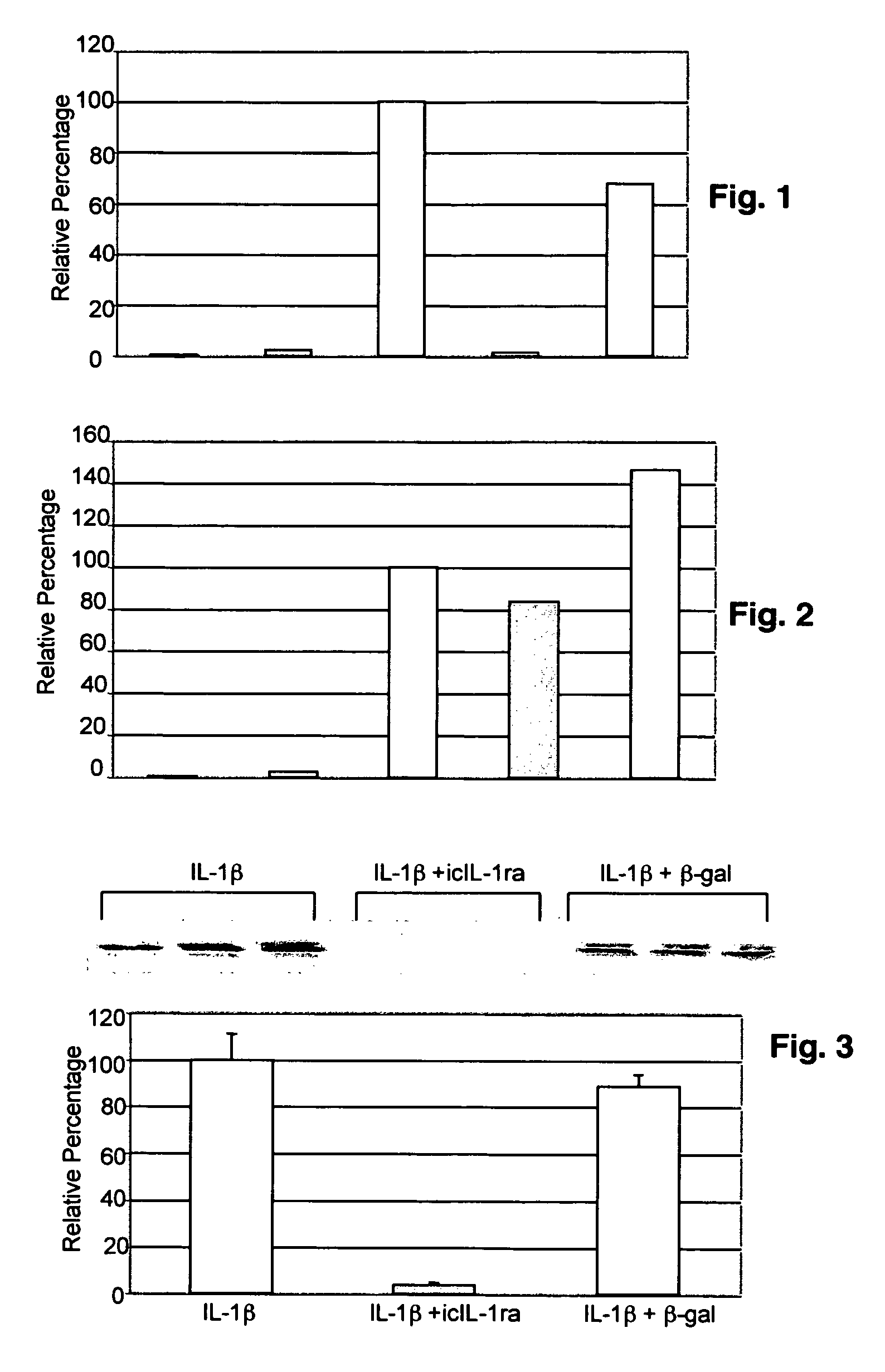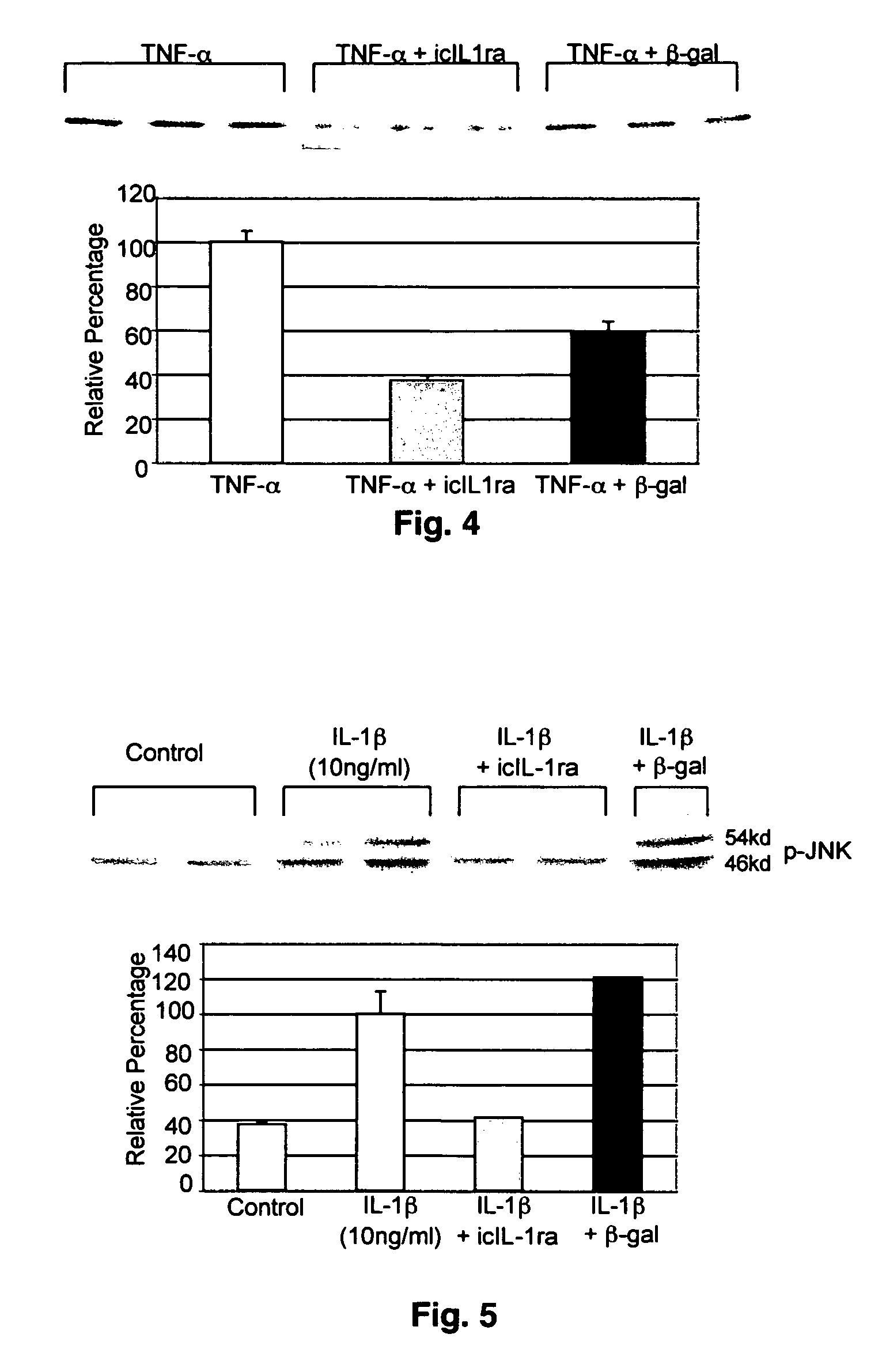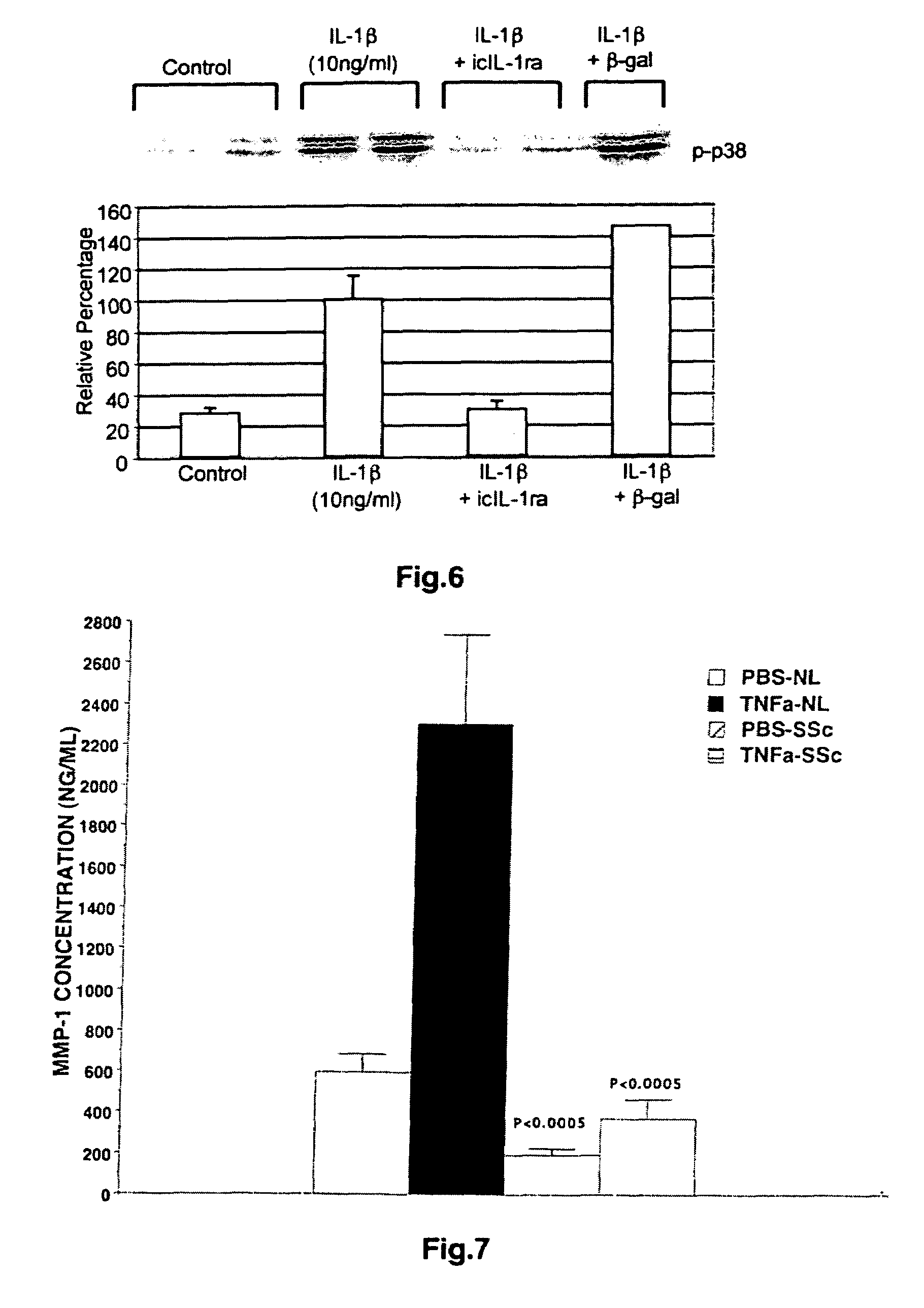Intracellular interleukin-1 receptor antagonists
a technology of intracellular interleukin-1 and receptor, which is applied in the direction of antibody medical ingredients, peptide/protein ingredients, peptide sources, etc., can solve the problems of almost nothing known about the function or mode of action of the intracellular isoform of the il-1 receptor antagonist, and achieve the effects of inhibiting tissue degradation, inhibiting the expression of matrix metalloproteinase, and inhibiting tissue degradation
- Summary
- Abstract
- Description
- Claims
- Application Information
AI Technical Summary
Benefits of technology
Problems solved by technology
Method used
Image
Examples
example 1
Inhibition of Collagenase Expression in Pig Articular Chondrocytes by Intracellular Isoform of IL-1 Receptor Antagonist
[0073]Chondrocytes were isolated from pig articular cartilage and cultured in monolayer. DNA encoding intracellular isoform of IL-1 receptor antagonist and LacZ were subcloned into adenoviral vectors that were transfected into pig chondrocytes. Cells were infected with adenoviral vector 24 hours before stimulating with 10 ng / ml porcine IL-1β at a multiplicity of infection that gave a transfection efficiency of 90% as monitored by immunostaining with IL-1 receptor antagonist antibodies. Production of intracellular IL-1 receptor antagonist protein was determined by western blot analyses after transfection. Culture supernatants were removed and the cells were solubilized for Western blot analyses. Blots were scanned and quantitated using a Storm Phosphor Imaging detection system and computer-based image analysis software.
[0074]As shown in FIGS. 1-4, normal chondrocytes...
example 2
Impaired Collagenase Expression in Dermal Fibroblasts Explanted from Patients with Scleroderma
[0075]Scleroderma is an immune-mediated disease (autoimmunity to matrix proteins and other antigens) characterized by excessive extracellular matrix deposition (particularly collagen) in skin and internal organs. Reduced collagenase activity may be one of the factors resulting in increased collagen deposition in the interstitium of the skin of patients with scleroderma. Hence, the present example examines the expression of collagenase in dermal fibroblasts obtained from patients with scleroderma.
[0076]Dermal fibroblasts were obtained from infant foreskins by conventional explant culture techniques and grown in Eagle's minimal essential medium (EMEM) containing Earl's balanced salt solution, 22 mM HEPES buffer, nonessential amino acids (NEAA), 0.05 mM sodium pyruvate, 2 mM L-glutamine, 100 U / ml penicillin, 100 ug / ml streptomycin, and 9% fetal bovine serum (FBS), hereafter referred to as “Com...
example 3
Cloning and Transfection of Intracellular Isoform of IL-1 Receptor Antagonist
[0089]Based on the above findings and previous observation that scleroderma fibroblasts have elevated intracellular isoform of IL-1 receptor antagonist (icIL-1ra), the relationship between the expression of the intracellular isoform of IL-1 receptor antagonist and MMP-1 was explored in cells transfected with plasmid encoding the intracellular IL-1 receptor antagonist. Cloning and transfection of intracellular isoform of IL-1 receptor antagonist are described below.
[0090]Poly(A)+RNA obtained from THP-1 monocytic cells (ATCC, Manassas, Va., USA) stimulated with 1 mg / ml LPS and 100 ng / ml PMA was reverse transcribed using oligo (dT)18 primers and random hexamers. The cDNA thus obtained was subjected to polymerase chain reaction (PCR) using 5′- and 3′-primers corresponding to the coding sequence of icIL-1ra Type 1 sequence as reported by Haskill et al. (1991). Desired restriction enzyme sites were incorporated i...
PUM
| Property | Measurement | Unit |
|---|---|---|
| real time RT- | aaaaa | aaaaa |
| real time RT- | aaaaa | aaaaa |
| concentrations | aaaaa | aaaaa |
Abstract
Description
Claims
Application Information
 Login to View More
Login to View More - R&D
- Intellectual Property
- Life Sciences
- Materials
- Tech Scout
- Unparalleled Data Quality
- Higher Quality Content
- 60% Fewer Hallucinations
Browse by: Latest US Patents, China's latest patents, Technical Efficacy Thesaurus, Application Domain, Technology Topic, Popular Technical Reports.
© 2025 PatSnap. All rights reserved.Legal|Privacy policy|Modern Slavery Act Transparency Statement|Sitemap|About US| Contact US: help@patsnap.com



